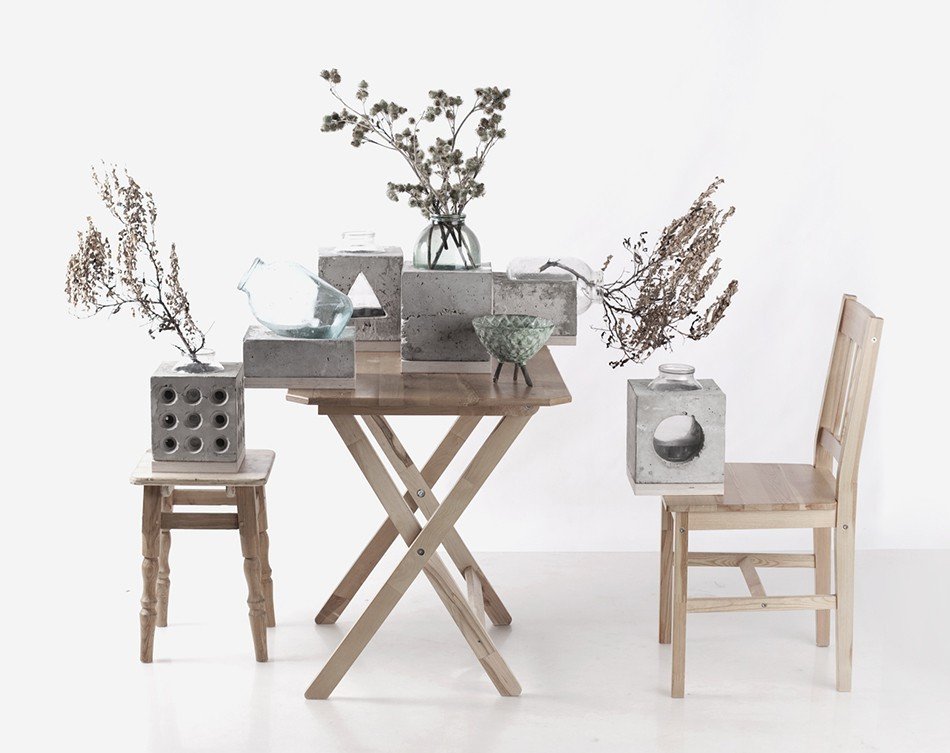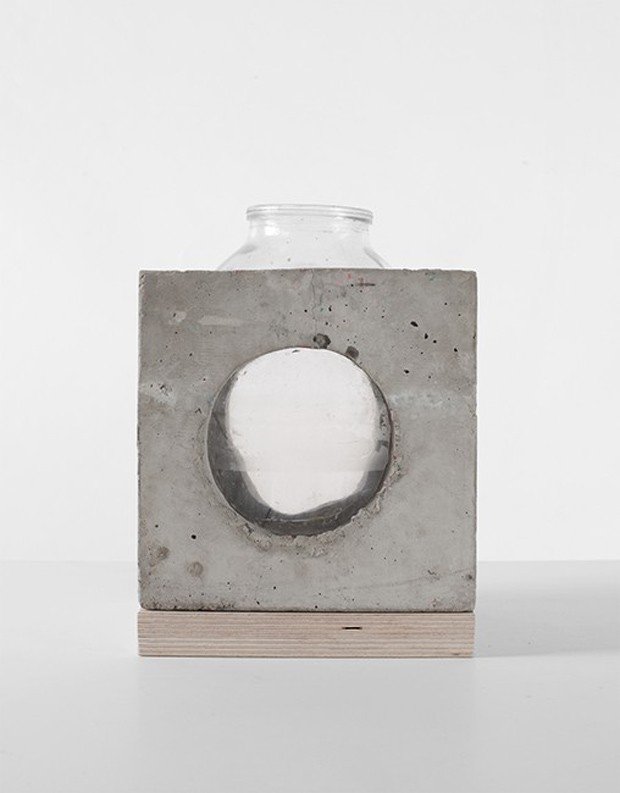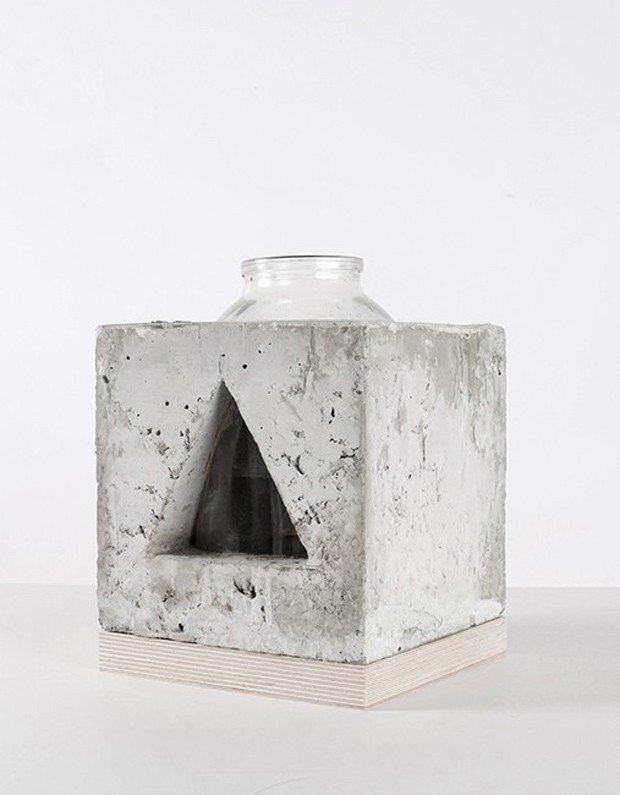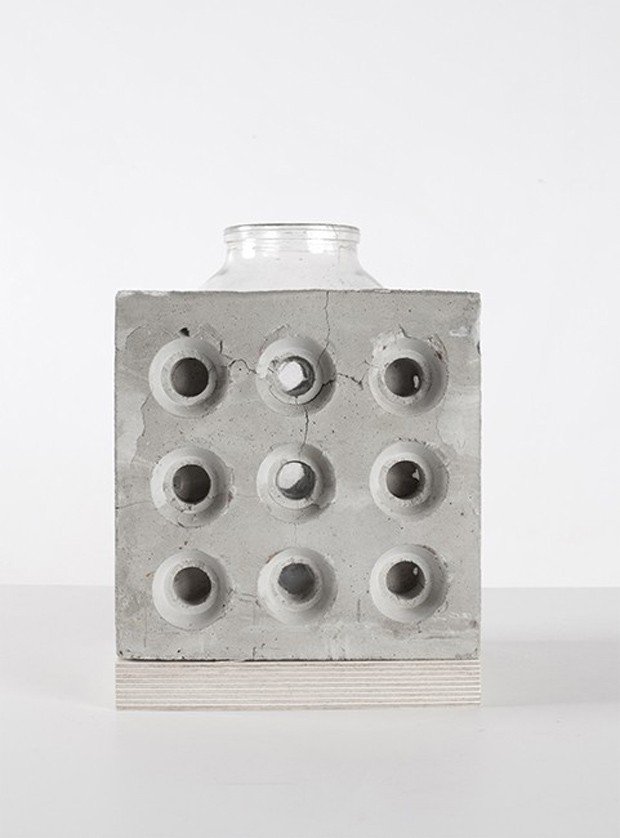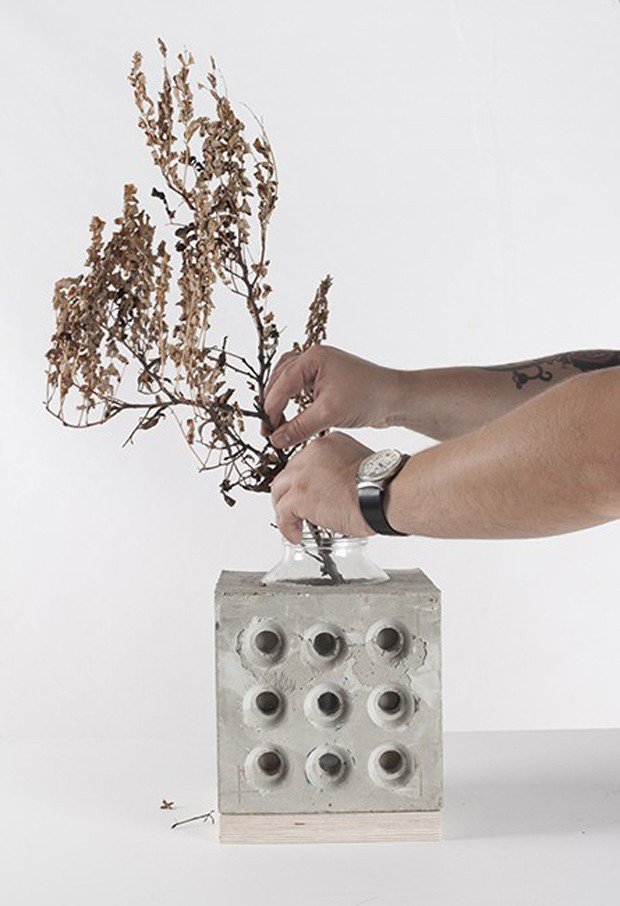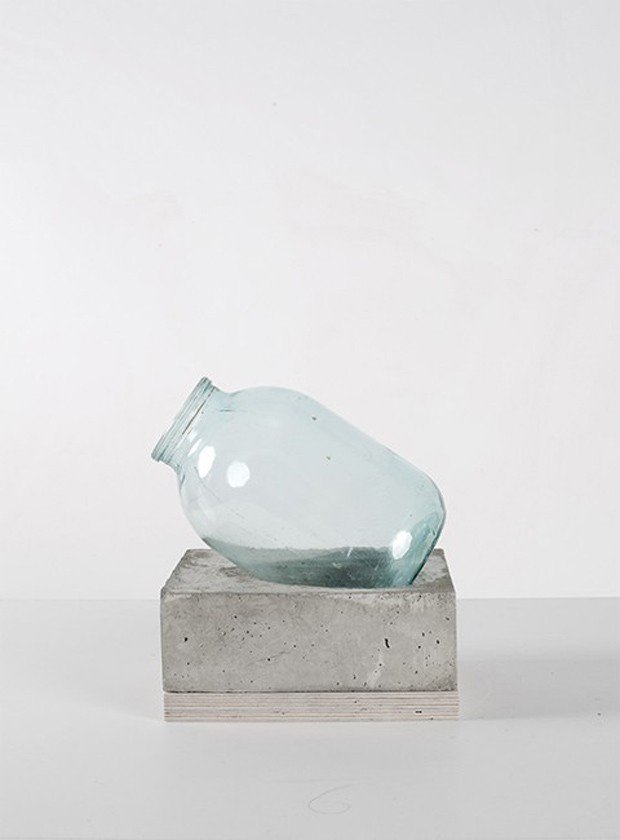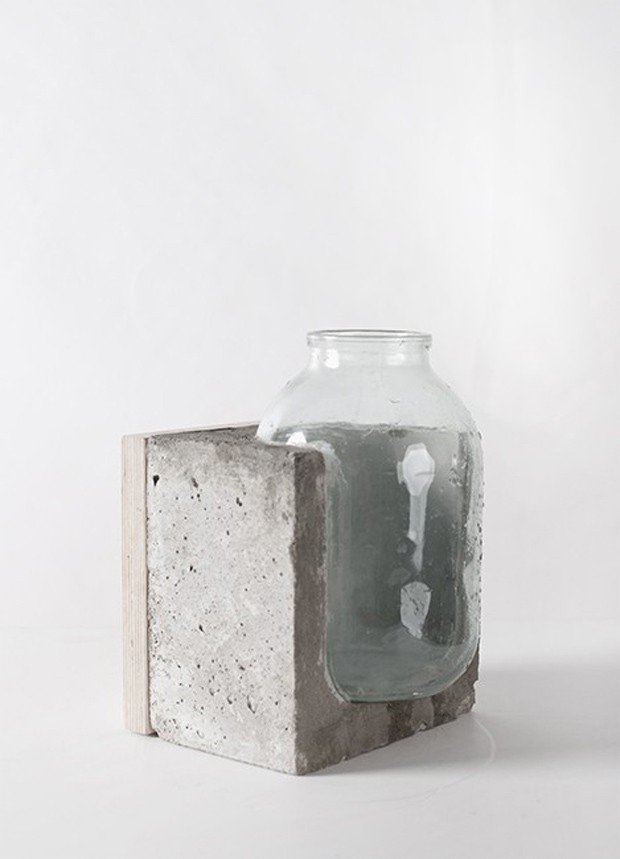It does not take a numbers genius to enjoy art, and even amateur arithmeticians can appreciate the mathematical foundation behind Sergey Makhno’s series of vases, The Invariants. In the field of mathematics, an invariant is a property of objects that remain unchanged in transformation. For example, angles of a polygon and ratios of distances are invariant when the shape is scaled or rotated. This geometric property inspires the Boolean subtractions from concrete blocks, forming a void that cradles a three-liter glass jar as the vase. Some holes are triangular, others circular, and less regular cavities even allow the jar to sit at an impossible angle. Each of these rectangular prisms of concrete sit on a wooden mount, so that the piece is tactile-friendly to any countertop and surface. Natural defects in the poured concrete garner a roughness and austerity reminiscent of Brutalist architecture; a city of these decorative pieces is not far from an adult version of those toy building blocks common to every individual’s childhood, and lovingly so. In this sense, Makhno has found a way to transform a geometric invariant into something new: a memory invariant.


